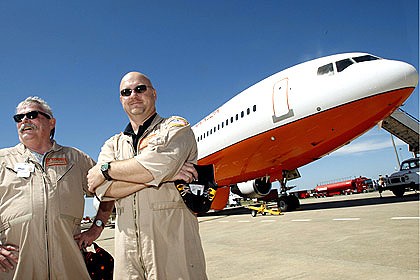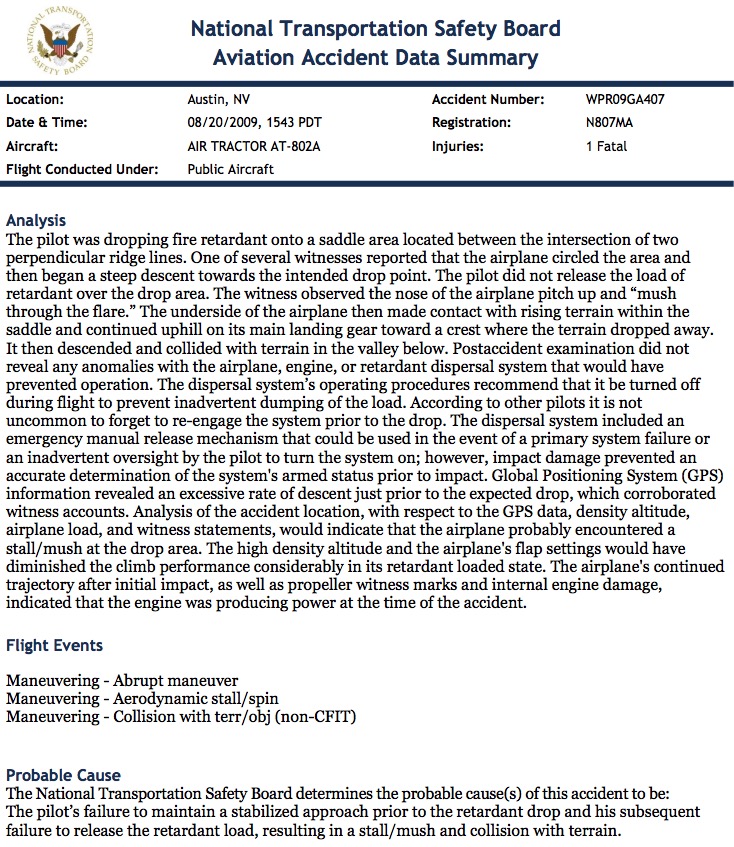Australia began experiencing bushfires several weeks ago and have even had a firefighter fatality already. They are gearing up for the new season in at least two areas:
The state of Victoria may contract for super-tanker
From the Herald Sun:
==================
The leasing of a new $10 million super water-bomber will be a very welcome addition to Victoria’s firefighting arsenal.
With the bushfire season now upon us the state is bracing for a repeat summer of soaring temperatures and tinder-dry conditions.
The State Government has acted swiftly in fast-tracking this aircraft, which is likely to be a DC10 or a 747, and is expected to be airborne from January.
The chosen aircraft will be capable of dumping up to 70,000 litres in one go, about eight times as much as Elvis, the famous sky crane.
And it will be able to fly anywhere in Victoria within 45 minutes.
The Government says similar aircraft were successfully used to fight the Californian wild fires.
There has been some debate about the effectiveness of water-bombing planes after revelations the Russian Government offered us the use of two Ilyushin-76 jets, three days after Black Saturday.
The offer was declined mainly on grounds the jets were unsuitable for the Victorian conditions and should not be seen as the “silver bullet”.
The Government also said flying heavily loaded, multi-engine planes at 150m in mountainous and possibly smoke-obscured terrain posed enormous safety considerations.
The state of Victoria tests new fire control center
From The Age:
==================
In the real world yesterday’s weather was grey, damp and unthreatening.
But within Victoria’s remodelled, re-equipped and rebadged bushfire State Control Centre – and in the vivid imaginings of fire-fighting hierarchy – extreme weather was sparking fire from rural forests to the urban fringe, and rekindling the still-raw memories of Black Saturday.
About 30 desk-bound fire specialists – the central command front-line – furiously worked keyboards, phones and the floor as giant video screens scrolled through a series of fire scenarios being called in from the field. Around them a circle of overseers siphoned critical information to imaginary fire-fighting troops on the ground, to endangered communities, and up the chain of command.
Imaginary fires broke out from one end of the state to the other, provoking not-so-illusory tensions in the nerve centre as new systems, born out of failures exposed on Black Saturday and through the ongoing Bushfires Royal Commission, were put though their paces.
One of the key changes is an overhauled command structure, introducing new ”area of operations” controllers in the field and a single state controller with ultimate responsibility for Victoria’s bushfire response. At the helm yesterday morning was CFA chief Russell Rees, who has endured close questioning of his actions on Black Saturday through the royal commission hearings. By afternoon command of the exercise had passed to Ewan Waller, chief fire officer of the Department of Sustainability and Environment.
Under the previous structure, criticised in the Black Saturday aftermath for its ambiguity, the two fire chiefs simultaneously shared responsibility for emergencies. Following a review of the system by Police Chief Commissioner Simon Overland, this summer a streamlined fire command-and-control structure has been introduced, and the buck stops with the state controller empowered on the day.
The scenarios yesterday also tested new emergency warning systems designed to rapidly broadcast alerts across agency websites and through radio, telephone systems and broader media. Breakdowns in critical communications have been another key concern of the royal commission.
A $2 million revamp of the control room, along with evolving protocols and safeguards, is designed to improve communication within the command centre. One of the key issues identified in early hearings of the royal commission was the failure on February 7 of chiefs to see or act on the predictions of fire behaviour specialists. The new control room design brings them, together with meteorologists and mappers, closer to the action in the nerve centre.
Thanks Dick



